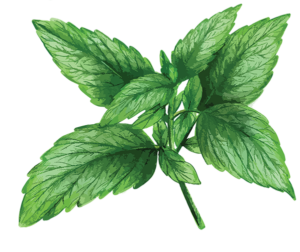 Scientific name: Melissa officinalis
Scientific name: Melissa officinalis
Appearance: A member of the mint family, lemon balm is an erect herbaceous perineal that grows 1 to 3 feet in height with toothed, broadly oval to diamond-shaped leaves that are wrinkled and scalloped along the edges. When crushed, the leaves have a distinct lemon scent. The quarter-inch flowers may be pale yellow, pink, or white and bloom in late summer.
Habitat: Native to southern Europe; now grown extensively throughout Europe; widely naturalized in North America, mostly in the northeastern United States and Canadian provinces
Key constituents: Volatile oils—citral, citronellal; flavonoids—melissiosides A–C; polyphenols; tannins; triterpenes
Properties: Relieves stress and anxiety; aids in alertness, and memory; relieves cold sores; soothes skin abrasions and insect bites; antithyroid properties
Parts used: Aerial parts—leaves
Practical preparations and uses: Raw form—(ingested) thought to increase calmness, memory, and alertness in adults under mental stress; tincture form—drink with water for anxiety and mild depression; essential oil—massage across painful shingles gently; infusion—drink to soothe headaches; lotion—make an infusion to soothe cold sores and apply several times daily; juice—apply to cuts and scrapes; ointment—apply to insect stings.
Sources: Chevallier A. Holy basil, tulsi (Hindi). Encyclopedia of Herbal Medicine. New York, NY: DK Publishing; 2016:116; Johnson RL, Foster S, Dog TL, et al. Guide to Medicinal Herbs: The World’s Most Effective Healing Plants. Washington, DC: National Geographic Partners; 2010:35-37.
* Consult with a qualified healthcare professional before attempting to self-treat ailments.




